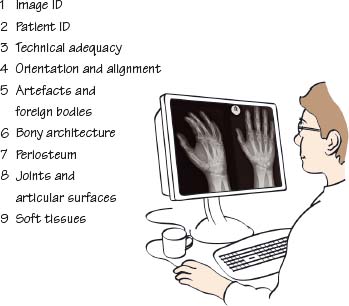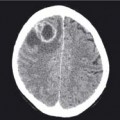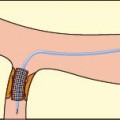19.2 Approach to Extremity XR interpretation

Extremity XR referral checklist
(see Chapter 7)
The imaging referral form is a legal document. The referrer carries the responsibility to ensure the correct and complete information is conveyed to the Imaging Department so that the patient is appropriately diagnosed and managed.
- Patient identification: The referrer must ensure that the Imaging Department receives the correct identification details of the patient to be investigated: full name, date of birth and hospital identification number are the essentials.
- Clinical status and mobility: Any neurovascular injury of the extremity must be assessed and managed before XR imaging. In trauma cases, the patient should be resuscitated using ATLS guidelines and extremity injuries are therefore usually managed in the secondary survey.
- Adequate views and extent: The fundamental difference between plain imaging of the extremity and other body areas is that two views of the site are taken in different planes. The exceptions to this rule include:
1 Rheumatological disease–two views may not be necessary and only indicated regions should be imaged.
2 Hand–AP and oblique views are taken, though a lateral view may be needed for carpometacarpal dislocation.
3 Scaphoid–multiple specific views must be taken to view the scaphoid adequately due to the risk of avascular necrosis with scaphoid fractures.
4 Shoulder–AP and lateral (20° anterior of true lateral) views together with specialised views.
5 Ankle–the AP is not truly absolute and is taken to view the talus within the ankle joint (mortice view).
6 Knee–in trauma cases AP and horizontal beam lateral views are taken to help detect lipohaemarthroses (a fluid level formed by fat floating on blood within the joint).
- Patient location and travel details: This needs to be considered carefully depending on patient location. Will the patient return to the referring department? Which mode of transport is the most appropriate and comfortable for the patient? For outpatient referrals consideration must be given to the patient’s ability to attend without support.
- Indications: There are many indications for extremity XR including fractures and suspected fractures, postoperative progress, rheumatological pain or foreign bodies.
- Contraindications: There are few contraindications for XR of the extremity. However, there are definitely contraindications to the positioning needed. These patients may have reduced mobility and this must be considered when requesting specific views.
Approach to extremity XR interpretation
Stay updated, free articles. Join our Telegram channel

Full access? Get Clinical Tree








